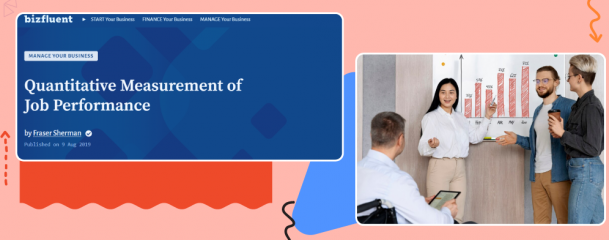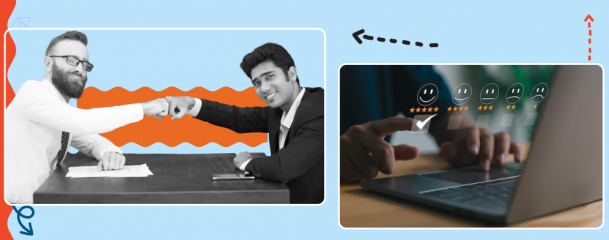1. What Is Critical Incident Method?
Also known as critical incident technique (CIT), the critical incident method uses structured research techniques to gather data around outcomes in a given situation.
In the context of performance appraisal, employees are asked to reflect on a specific time when a behavior or action impacted on a particular objective or task. This impact might be positive or negative, but the main goal is to determine a relationship between the employee doing something and the resulting effect.
1.1. What Is the Importance of Critical Incident Method?

Critical incident is a technique used for obtaining qualitative data about employee performance. This can be useful in conjunction with quantitative scoring systems or metrics, so as to create a more in-depth picture of an employee’s performance.
For instance, instead of just focusing on how many sales someone has achieved, the critical incident method zeroes in on what behaviors or actions were linked to achieving (or not achieving) a sale. Once these are identified, it becomes easier for a manager to see clearly which behaviors to encourage and which to discourage.
1.2. What Is Critical Incident Method in HRM?
In the context of human resources management, the critical incident method should be seen as a useful tool to bolster performance. Having it integrated into wider HRM processes means you can deep dive into any issues or concerns related to an employee, then refer them to any learning and development opportunities offered within the company.
It may be useful to purchase a performance management platform to keep track of critical incident method sessions, so that both managers and their team have a record of what was discussed and agreed upon.
2. What Are the 5 Steps of Critical Incident Technique?

2.1. Establish Aims
The first step is to identify what objectives, behaviors or skills you want to examine using the critical incident technique. One aim could be to determine what practices lead to a sales conversion; another aim might be to improve organizational capabilities.
2.2. Specify Conditions
Once you know what you want to achieve, you need to set the parameters for what incidents you want to analyze. You may also want to decide whether observations will be delivered solely by the employee or involve a 360 approach.
2.3. Collect Data
The next stage is to actually gather information about critical incidents. This usually means sitting down with employees and asking them to recall specific occasions when they were successful or unsuccessful in a task and what behaviors they evidenced. This data can also be gathered using written forms.
2.4. Analyze Data
As you go through the incidents, you should be able to dissect what employee actions resulted in a positive result and which actions produced a negative result.
2.5. Determine Outcomes
Finally, managers and employees should discuss together what measures need to be taken going forward to improve performance and deliver optimum efficiency.
3. What Are the Advantages of Critical Incident Method?
- Provides richer information than some other methods, as the evaluation is both targeted (focusing on a specific incident) and detailed (goes beyond pure metrics).
- Identifies underlying causes behind the outcomes of an incident.
- It's flexible, so can be applied to assessing everything from workflows to soft skills.
- The framework is designed to be open and subjective, giving employees a chance to explain their actions in a natural, free-flowing manner.
- Examines rare incidents. This is a unique critical incident method advantage, as other performance management systems tend to focus only on patterns of behavior.
- Can be implemented through interviews or questionnaires.
4. What Are the Disadvantages of Critical Incident Method?

- Relies on employee memory being accurate and honest.
- As detailed recall is key to efficacy, it tends to only work effectively as part of real-time feedback or other feedback systems that involve frequent reviews.
- Can lead to over-emphasis on unusual incidents rather than common occurrences.
- It may be more time-consuming than other, less demanding methodologies.
5. Who Uses Critical Incident Method?
The critical incident method was originally developed for use with pilots, but today it is commonly utilized in performance appraisals, reviews of organization management, system design, software development, market research and psychological assessments.
In addition to general business settings, it is often employed in healthcare, marketing and IT.
6. What Is Critical Incident Method in Job Analysis?
The critical incident method can also be used in the workplace as part of job analysis, in order to reassess and redefine a position’s specifications. By interviewing current employees in a specific role using the critical incident technique, managers and HR departments can gain greater insight on what skills, behaviors and responsibilities are necessary to perform the job effectively.
This not only helps to realign what is required from existing employees, but will make it easier to get the right new hires down the line.
7. Top Example of Critical Incident Method
First, the manager would consider the goal of using CIM in this case, which in this case might be a higher resolution rate. They might then decide to focus on incidents where the employee had efficiently resolved issues as well as incidents where the problem had to be escalated or there were complaints regarding service.
Next, the manager would then methodically discuss each incident with the member of staff, with the two people collaboratively analyzing what happened. This dialog would then progress to determining a course of action going forward to reinforce the behaviors that led to positive results, in addition to solutions to avoid the behaviors that led to negative results.
Depending on the review schedule of the company in question, these courses of action would then be evaluated after a few weeks or months to see if there had been any associated improvement.
8. FAQs
8.1. What is the purpose of the critical incident technique?
The aim of the critical incident technique is to improve performance through detailed analyses of specific incidents in an organization. Taking a granular approach rather than analyzing wider patterns can lead to surprising, useful findings that would otherwise be missed.
8.2. What is the enhanced critical incident technique?
The enhanced critical incident technique is an evolution of the original critical incident technique. It is most commonly found in counseling but has some applications in performance appraisal. It involves additional features such as the initial contextualization of incidents as well as multiple credibility checks to improve accuracy.
 Interested in Virtual Team Building Events?
Interested in Virtual Team Building Events?





















